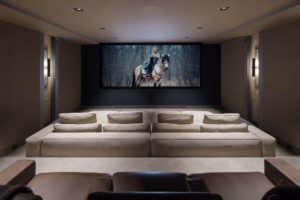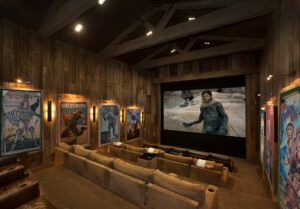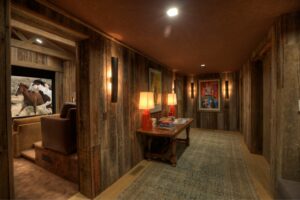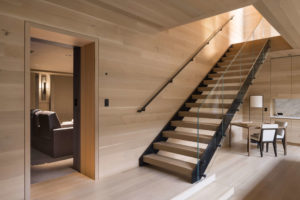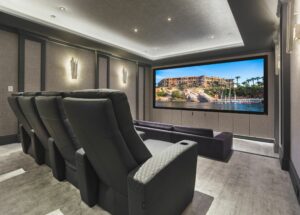Dr. Floyd E. Toole
A Professional Life Well Lived
If a tree falls in a forest and no one hears it, does it make a sound? An age-old debate: Perception versus reality. Let’s consider “Hi-Fi” audio and another recurring debate: What equates to good sound? How do we reproduce sound perfectly? Is it a personal preference, or are there actual tenets for what produces great sound? How can we achieve exceptional sound in our private theaters?
To answer these questions, we can thank a member of our community, the scientist of sound, Dr. Floyd Toole. Anyone in the industry should be well aware of Dr. Toole. His book Sound Reproduction – The Acoustics and Psychoacoustics of Loudspeakers and Rooms is the standard for insight on creating the best listening experience in studio control rooms, dedicated listening rooms, private cinemas, or your living room. Toole’s belief that audio components should be “transparent,” reproducing the original recordings as faithfully as possible, spurred a career in applying science to discover the truth. But who is the man behind the research? Like many visionaries, he is humble, observing with typical Toole stoicism “I have enjoyed my professional life. I turned my audio hobby into my profession, kept my hobby, and feel that I have never had a job.”
A hobby of tinkering with amplifiers in the 1950s that he shared with his father led to a career dedicated to reproducing sound that is true to nature and the intent of the artists. Picture sitting in your listening room or private cinema and hearing sound that transports you to the performance or into the story. Perfect sound. How can that be accomplished?
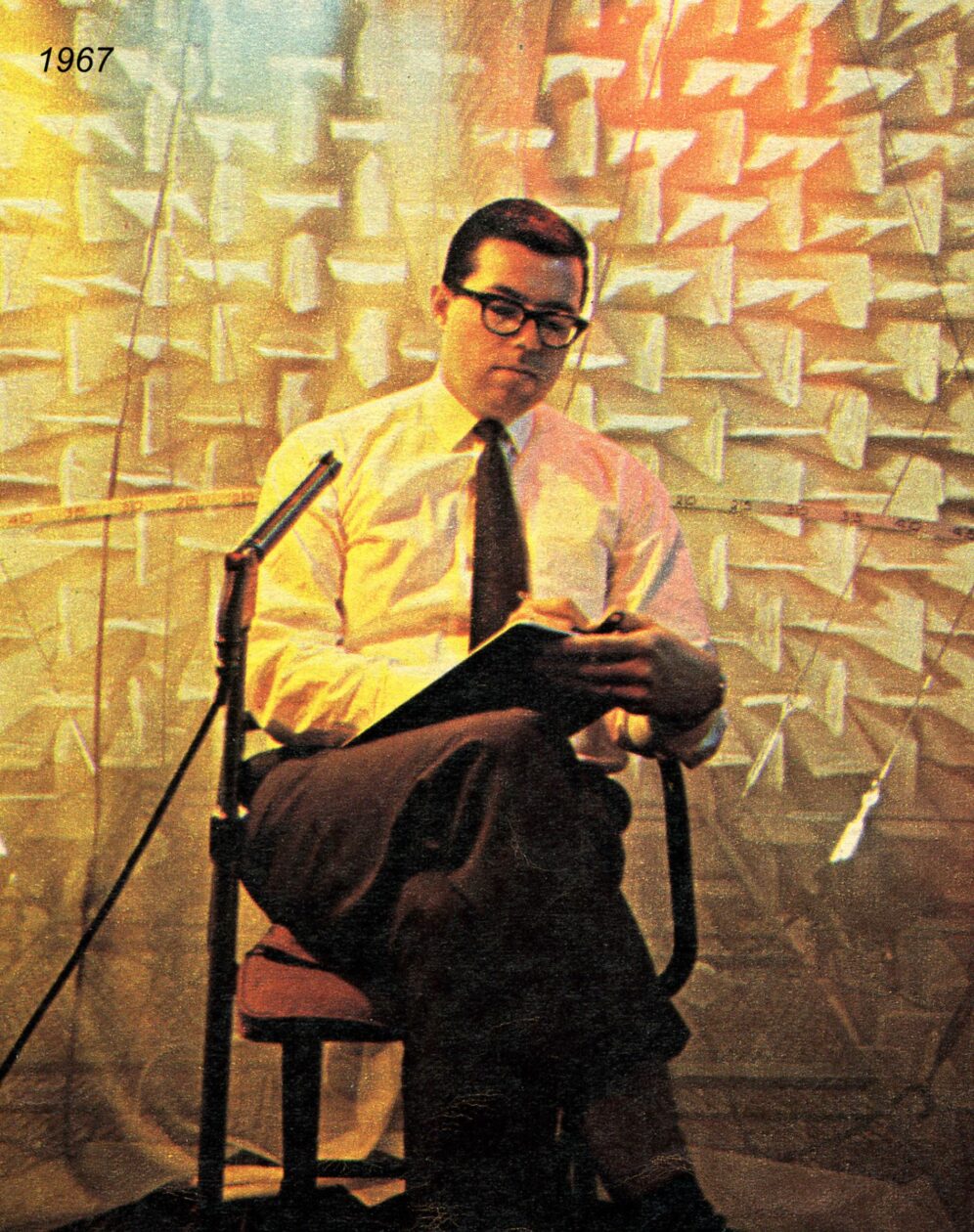
Toole took his hobby to school, studying electrical engineering at the University of New Brunswick and then on to transistor circuit design at the Imperial College of Science and Technology, University of London. Or so he thought. An overload of students in his field of choice forced Toole to elect another. Fatefully, he became aware of psychoacoustics and how “two ears and a brain” result in stereophonic sound localization. We have benefitted from this happy accident for almost 60 years. Toole earned his Ph.D. in 1965 which led to his first employment as a research scientist in the Division of Applied Physics of the National Research Council of Canada. Toole eagerly anticipated continuing sound localization experiments in the anechoic chamber, a huge step from the headphone listening of his thesis work, at the NRC facility in Ottawa.
Toole’s belief that loudspeaker quality should be determined by its ability to reproduce the original sound was in direct conflict with the prevailing idea that the quality of a loudspeaker was subjective, a personal preference. Disappointed by the poor performance of tested loudspeakers in initial experiments led him to wonder if speakers with such different measured results could all sound good. In 1966 Toole initiated his first blind equal-loudness listening test with a four-at-a-time comparison. During what Toole refers to as a “Friday afternoon experiment,” several colleagues brought their personal speakers to the NRC. “These speakers were vastly different, and the results were surprising.” reports Toole, concluding, “For the most part, everyone agreed on what speakers they preferred: loudspeakers with the flattest, smoothest, on-axis frequency response. So where is the highly touted personal preference?” As a result of these experiments, even the Director of the division rejected his highly regarded speakers and agreed with Toole that the industry needed some serious scientific input. That was all the encouragement he needed to embark on a lifetime of research. Research has changed the audio industry and established the criteria the best in that industry use to produce good sound.

The NRC anechoic chamber became dedicated to the project and was reconfigured to make more accurate measurements on loudspeakers. A listening room was constructed that allowed for minimally-biased subjective sound quality ratings. Toole’s work at NRCC resulted in industry standards for taking loudspeaker measurements (ANSI/CTA 2034) and listening room specifications (IEC 268-13 – 1985). In the late 80s, Toole organized several manufacturers who had benefited from using the science and the facility, forming a nonprofit consortium, in partnership with the NRCC, to investigate a problem shared by them all – How to address low frequency performance in small rooms. The Athena project, a research group dedicated to new knowledge, not product development, was born. Over the years some of these Canadian brands became big players in the international audio scene. Several US and overseas loudspeaker manufacturers visited the lab as well, with some commissioning studies. Dr. Toole’s message was being heard, and the audio industry was better for it.
Toole simply loves what he does. He would tell you he’s never had a job but has had two employers. In 1991, the same year he was elected president of the Audio Engineering Society (AES), Toole joined Harman International Industries Inc. as Corporate Vice President – Acoustical Engineering. Dr. Toole persuaded senior management that Harman could use a research group dedicated to new knowledge, not product development. He created and directed the Harman Research Group, a central resource for acoustical research and technology development for consumer and professional audio industries. Toole established methods for subjective and objective evaluations, which have been used to clarify the relationships between technical measurements of loudspeakers and listeners’ perceptions.
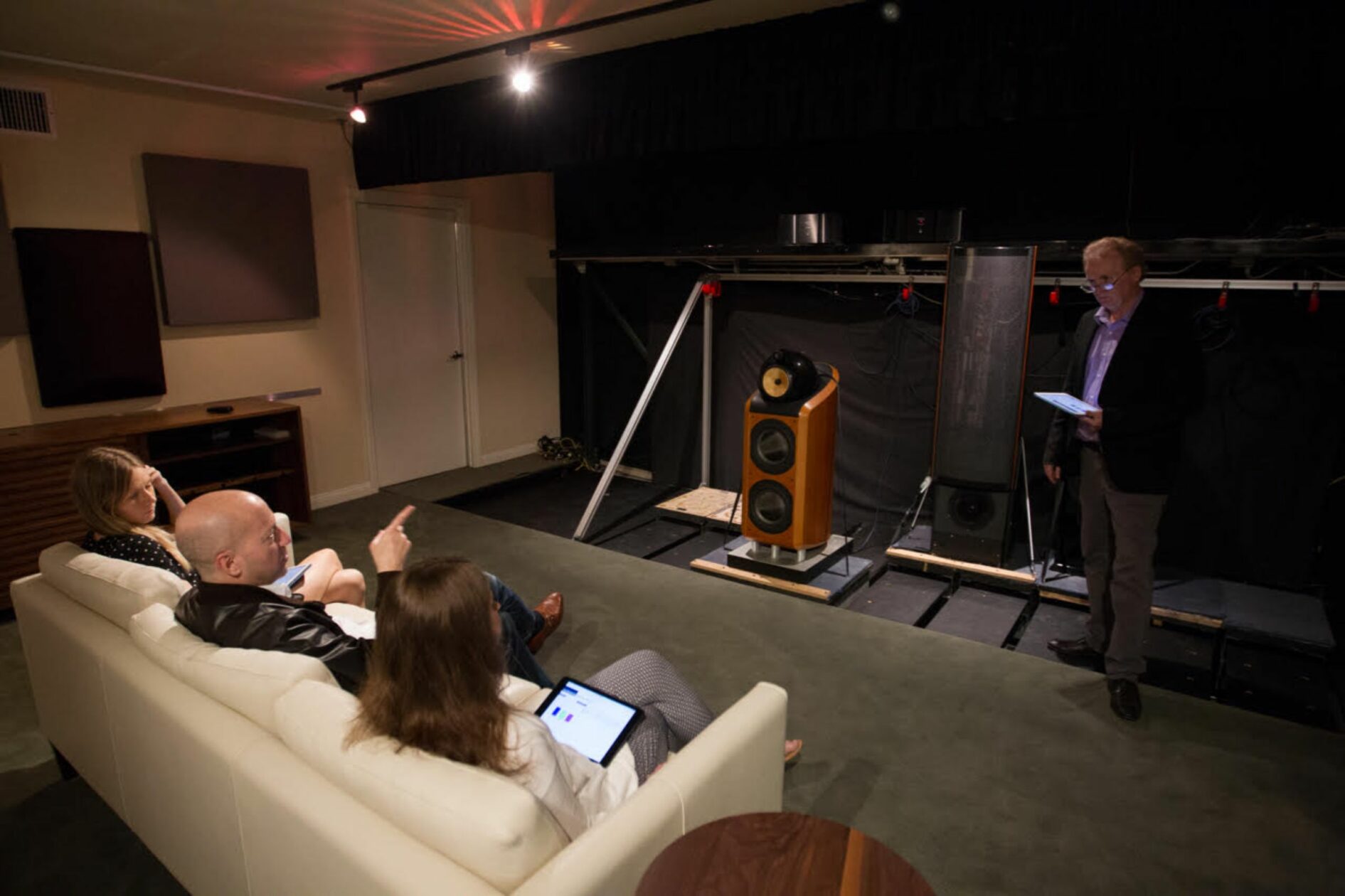
Toole’s research has focused on the acoustics and psychoacoustics of sound reproduction, improving engineering measurements, objectives for loudspeaker design, and techniques for reducing variability at the loudspeaker/room/listener interaction. A significant bonus was the agreement that the research results could be published, following the scientific tradition of knowledge exchange. Referring to Harman’s willingness to share their research, he remarks, “Amazingly, we were educating our competitors.” Toole retired in 2007 and remained a consultant to Harman until 2019.
Toole is a detective of sorts. Seeking knowledge. “I just like asking questions and finding out answers to those questions.” His purpose? To reveal how to reproduce sound that brings the live concert, natural sounds, or carefully crafted soundtracks into your home as perfectly as possible. Toole states in his book, “When a truly good recording is auditioned through a truly good playback system, it can be a spine-chilling experience. It isn’t reality, but it can be absolutely superb music and high-quality entertainment.”
We build community through relationships. Shared experiences with kindred spirits can create a kind of extended family. Those who know Floyd Toole characterize him as a generous, approachable mentor and friend. They universally feel fortunate to share time with him. These colleagues are eager to share stories about the man who means so much to all who enjoy sound in movies, music, and entertainment.
Paul Barton met Toole in 1974, two years after founding PSB Speakers, and recalls, “We really hit it off.” Paul was looking for a way to design loudspeakers that would be perceived as organic sounding, natural to the human sense of hearing. Upon learning of Dr. Toole’s research, he recognized the potential. Barton explains, “We sort of fed off each other. My need to apply what I could learn for developing products and his research to determine people’s preferences. I was developing a product and had the benefit of using the NRC at the same time. Year after year, I would drive six hours to Ottawa and spend a week every six weeks or so. Floyd and his wife were the best hosts.”
During this time, funding for research dwindled, but Toole was not going to be denied. He gathered his contacts and organized the Athena Project to continue his quest to understand what makes good sound to human perception. “So, the room became a big part of the equation that Floyd wanted to understand better,” explains Barton. “What the target function needs to be in a room based on listener preferences. An adjustable room was built at NRC. You could make it rectangular, an L-shaped room, or you could make it a square room.” Proof of concept is in the continued use of these resources over 30 years later, as PSB and other members of the consortium do. As stated on the PSB website, All PSB speakers are voiced in the anechoic chambers of the NRC in Ottawa, Canada. In Toole, Paul found a lifelong friend and peer, a kindred spirit, both seeking a way to reproduce sound that listeners would perceive as real, alive, and natural.
In the mid 80’s The NRCC was making waves and attracting attention when a class of aspiring recording engineers from the McGill University of Montreal visited the facility. To one student, the visit was much more than just another field trip. Dr. Sean Olive recalls, “It was in the spring of 1985, and I was completing my Masters in Sound Recording. I was going to be a recording engineer and tonmeister.” After a day in the listening room, participating in double blind listening tests, and seeing the anechoic chamber, his plans changed. “I didn’t even know such a career existed! That you could get paid to do listening tests and research what sounds good. I thought it was like an art, but he [Dr. Toole] had made it a science to specify loudspeakers that sound good. I saw this as an exciting career, and He completely sold me on it.” Olive started that career working over the summer on an intern basis.
Dr. Toole is quick to say how very valuable Sean’s contributions were. A fact he evidenced by offering Olive the opportunity to work with him at NRC. “I probably would not have gone into this career if it wasn’t for him. He’s a friend and mentor, almost like a parent,” The colleagues worked together at the NRC until Dr. Toole was offered the position at Harman in 1991. Dr. Olive joined him at Harman in 1993. “The science was mature and principles applied by the time Toole left for Harman, and we were just continuing it. Not putting a spin on it,” said Olive.
Olive agrees that Dr. Toole’s passion for good audio is complemented by his steadfast determination to discover the truth. That passion can turn to, if not disdain, certainly disappointment when objective data are obscured for personal gain or profit. Sean recalls when he and Dr. Toole were presenting a paper on room reflections and their perceptual effects at AES (Audio Engineering Society) in Los Angeles in the late 80s. The papers contradicted many other presenters selling acoustical products and services based on commercial motivations. As a result, Toole feared the pair would receive negative feedback on their work from those commercially motivated presenters, but Toole was willing to risk it.
According to Olive, “Toole just wanted to get it right. Eventually, those people and their ideas went away and were disproved.” Dr. Toole’s science-based approach continues to be the standard to follow. Olive hopes to continue collaborations with Toole and apply some of the research to improving headphones. A topic Dr. Toole has tapped Olive to contribute to the upcoming 4th edition of Sound Reproduction. “He’s just a great human being and very generous with his time and educating others.” Sean shares, “He started out as a boss, I got to know him pretty well as a colleague, but also as a friend. We’ve been friends, you know, all these years. Still are.”
Todd Welti knew the work of Drs. Toole and Olive as an acoustic consultant and graduate student. “I was seeing these papers by Floyd and Sean and immediately recognized the importance and practical usefulness of their work,” he recalls. So, he wasted no time in responding when the opportunity to work with them at Harman appeared on the AES website. It seemed fortune had smiled down on him until the airline lost his luggage on the way to his interview. “I showed up in a pair of jeans,” Todd admits, adding happily, “Floyd said, ‘I don’t worry about that,’ immediately putting me at ease.” Dr. Toole’s gracious and authentic nature came through from the start. “I knew I was at the right place. I feel like we’re kindred spirits. We’re both scientists. We’re both interested in the underlying principles that don’t change, not just technology.”
“Few people would be willing to challenge him, but on occasion, I would sort of play the devil’s advocate. Most of the times when I challenged him, he ended up being right, but there were times where he acknowledged, ‘Yeah, you’ve got a point there.’” says Welti, recognizing Toole’s staunch adherence to the scientific method. Todd adds “you propose theories and then you try to disprove them. Even when he thinks he’s right, he would be willing to discuss things and re-evaluate.” Toole’s inquisitive eye resulted in a significant opportunity for Welti, who recalls, “It was the genesis for my work on subwoofers (AES White Paper – Optimal Configurations for Subwoofers in Rooms Considering Seat to Seat Variation and Low Frequency Efficiency). We went to CEDIA and auditioned for a demo with 20 subwoofers.” The two scientists wondered, what are the advantages? Welti adds, “In typical Toole fashion, Floyd decides, ‘Let’s investigate!’ So, with that, we embark on this line of research, which led to a lot of answers and technology that people had been clamoring for.” Indeed, It is impossible to speak about low frequency performance in private cinemas without mention of the Todd Welti White Papers!
Welti has enjoyed the continued collaboration with Toole ever since his retirement. Long conversations, challenging each other, and Welti’s work as an editor for Toole’s book. “He’s very social, and I’ve continued to learn a lot from him after he retired. You know how musicians are described as having a complete mastery of their instrument? I would put him in the same league. He has complete mastery over acoustics, loudspeakers, and room interaction. He understands it fully. The small percentage that I’ve managed to incorporate has served me very well over the years.”
“An institution here at Harman,” Jim Garrett, Sr. Director, Product Strategy & Planning, Luxury Audio, says of Dr. Toole. “He’s at the heart of the science and research at Harman. The people that he mentored went on to lead our R & D and engineering teams. We look at the work that Floyd, Sean Olive, Todd Welti, and others accomplished for the betterment of the industry.” Asked what Toole’s contributions mean for private cinema connoisseurs, new or established, Garrett doesn’t hesitate to suggest confidence, “The foundation rooted in science and the knowledge Toole brought has certainly helped change the industry. The standards and practices that we, as manufacturers use, engineers, designers, and integrators use, are much more fact based now. What makes great sound, how people hear and listen, and what they prefer has been proven by science.” Setting a higher bar, Jim exhorts, “We’re the caretakers of this knowledge and how we impart it to the next generation. That’s our duty. How we take the work that’s been done and build on it, make it better. That’s our task.”
I first met Floyd Toole about 30 years ago. As a relatively recent convert to the home theater industry, I longed for valid and applicable information on small room acoustics. I had previously attended some previous courses by other “experts” and had been disappointed, but Dr. Toole’s credentials and his class summary had set my expectations high! I was not disappointed, but I was challenged. His dry wit and “it’s not rocket science” demeanor set the tone of his classes. But it was Dr. Toole’s matter of fact delivery of proven science and incredulity over what was being accepted as an acoustical treatment that challenged and set the trajectory for my career. This was during that first wave of home theater, and people and products were popping up, seemingly out of thin air. Many selling products and services Toole exposed as “needless” or, worse, detrimental. I made the commitment that my company would apply a scientific process to every room. We would have a documented reason for everything we advise and hold ourselves accountable for the results. That commitment defines us and inspires our core principle of Excellence, Always.
I have always enjoyed seeing Floyd. Whether it was at a CEDIA event, Harman Academy, or an after-event dinner, amiably yet vigorously debating some nuance of “good sound.” One favorite memory is when the Academy broke for lunch, Floyd leaned over and said, “Why don’t you ride with me?” As I settled into his new Tesla, I was treated to Dr. Toole’s sheer delight in demonstrating his new “spaceship” and its “ludicrous power and utter silence!” The moment was pure Toole and priceless!
So, what do colleagues say about Floyd Toole’s impact on the future of audio? According to Welti, his book should be required reading for anyone in the industry (It is at Paradise Theater). Paul Boland states, “All the knowledge we need to make a speaker sound good in a room can also be applied to a headphone, which has no room.” Dr. Sean Olive agrees and will elucidate his contribution in the upcoming 4th Edition of Dr. Toole’s book. In recent research, The Cinema Connoisseur conducted on criteria for the industry and recent technology changes, every audio engineer we interviewed cited the work of Dr. Floyd Toole! (See Cinema Intelligence – Pursuit of Perfection: Passion, Performance and Standards of Excellence and Cinema Intelligence this issue) No doubt, the audio industry will continue to be influenced by Toole’s body of work, but more importantly, those of us in this industry have been inspired by the man. When we share our passion for elevating audio experiences with our community, colleagues, and clientele alike, we honor him.
So, what’s next for the man we can thank for establishing scientific standards of excellence in audio? Plans were revealed in what Floyd calls an “omnibus mailing” to his personal community. In it, Toole describes the “push–pull” deliberation that resulted in the Toole’s planning a big move from California back home to Ottawa. Visions of an idyllic lifestyle near “friends, relatives and memories” that Floyd describes as being filled with “zest!” A new home renovation including, of course, plans for a media room. A great vantage point from whence a sonic connoisseur can observe and advance the audio community. In typical Toole style, Floyd concludes, “It is a good time for audio, and it gives me great satisfaction to know that I might have had something to do with it.”
